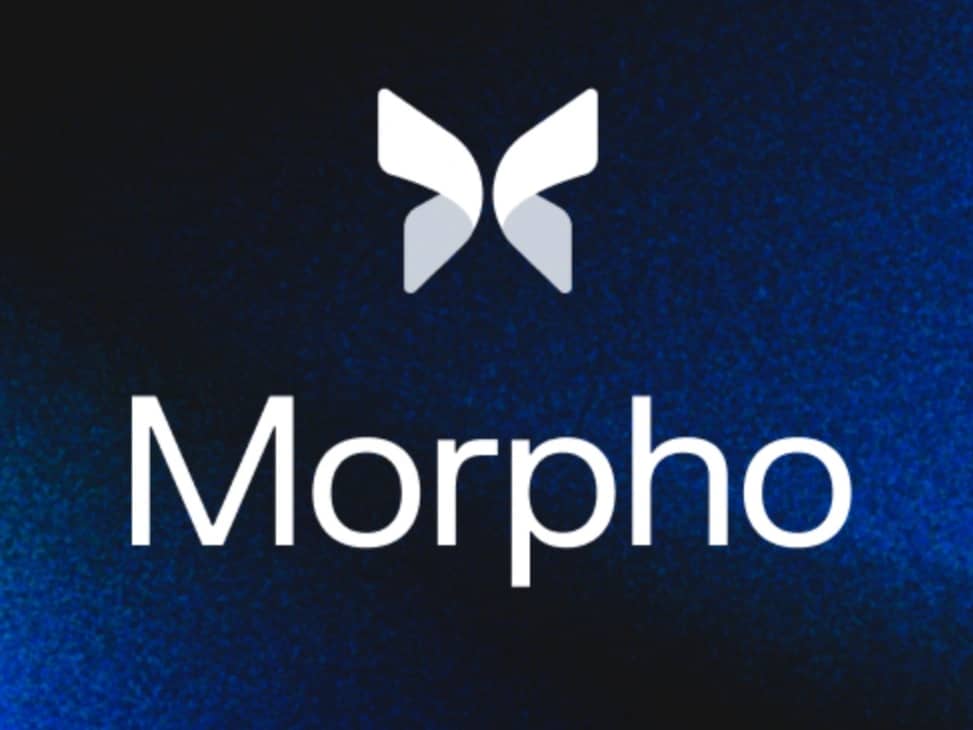订阅 wiki
Share wiki
Bookmark
Morpho
Morpho
Morpho 是一个去中心化的、非托管的借贷协议,实现在 以太坊虚拟机 上。 它旨在促进 加密 资产的超额抵押借贷。 它的功能是为用户和应用程序提供不可变的 基础 层,从而能够创建隔离的借贷市场。 [2]
概述
Morpho 是一个建立在 以太坊虚拟机 (EVM) 上的去中心化借贷协议。它允许用户以无需信任、非托管和超额抵押的方式借贷 加密 资产。它通过不可变的智能合约运作,为 去中心化金融 (DeFi) 应用提供基础层,使任何用户无需中介即可公开参与。该协议支持 ERC-20 和 ERC-4626 代币,并包括 抵押品 管理、基于贷款价值比率的 清算 保护以及由市场状况驱动的动态利率调整等核心机制。
Morpho 生态系统由几个不同的组件组成。Morpho 协议指的是促进借贷操作的 智能合约。Morpho 界面是基于 Web 的前端,允许用户与协议交互。Morpho 治理是由 MORPHO 代币持有者管理的去中心化系统,使社区能够控制协议升级等决策。Morpho Labs 是负责构建协议和相关工具的原始开发实体。最后,Morpho 协会是在法国注册的非营利组织,负责协调贡献者(包括 Morpho Labs)并促进生态系统的去中心化和发展。
Morpho 采用双重许可模式(BUSL-1.1 和 GPLv2)获得许可。一旦部署,如果底层 区块链 基础设施持续存在,其 智能合约 旨在无限期运行。该协议优先考虑可组合性、透明度和安全性,旨在为去中心化经济中的借贷市场创建一个稳健、无需许可 的 基础 层。[1]
Morpho 协会
Morpho 协会是一家位于法国的非营利组织,旨在支持 Morpho 协议的开发和可访问性。它汇集了贡献者和用户,通过资金倡议和基础设施支持来推进协议,而不是直接进行软件开发。
其职责包括托管 Morpho 网站的主要前端界面,为新用户提供访问权限,以及维护技术文档以帮助开发人员。该协会还管理与开源项目相关的知识产权,例如 morpho-optimizers,它在 morpho-org GitHub 上以 GPL3 许可证发布。虽然该协会提供必要的基础设施,但开发由 Morpho Labs 和 Institut Louis Bachelier (ILB) 等实体处理。 [2]
技术
Morpho 市场
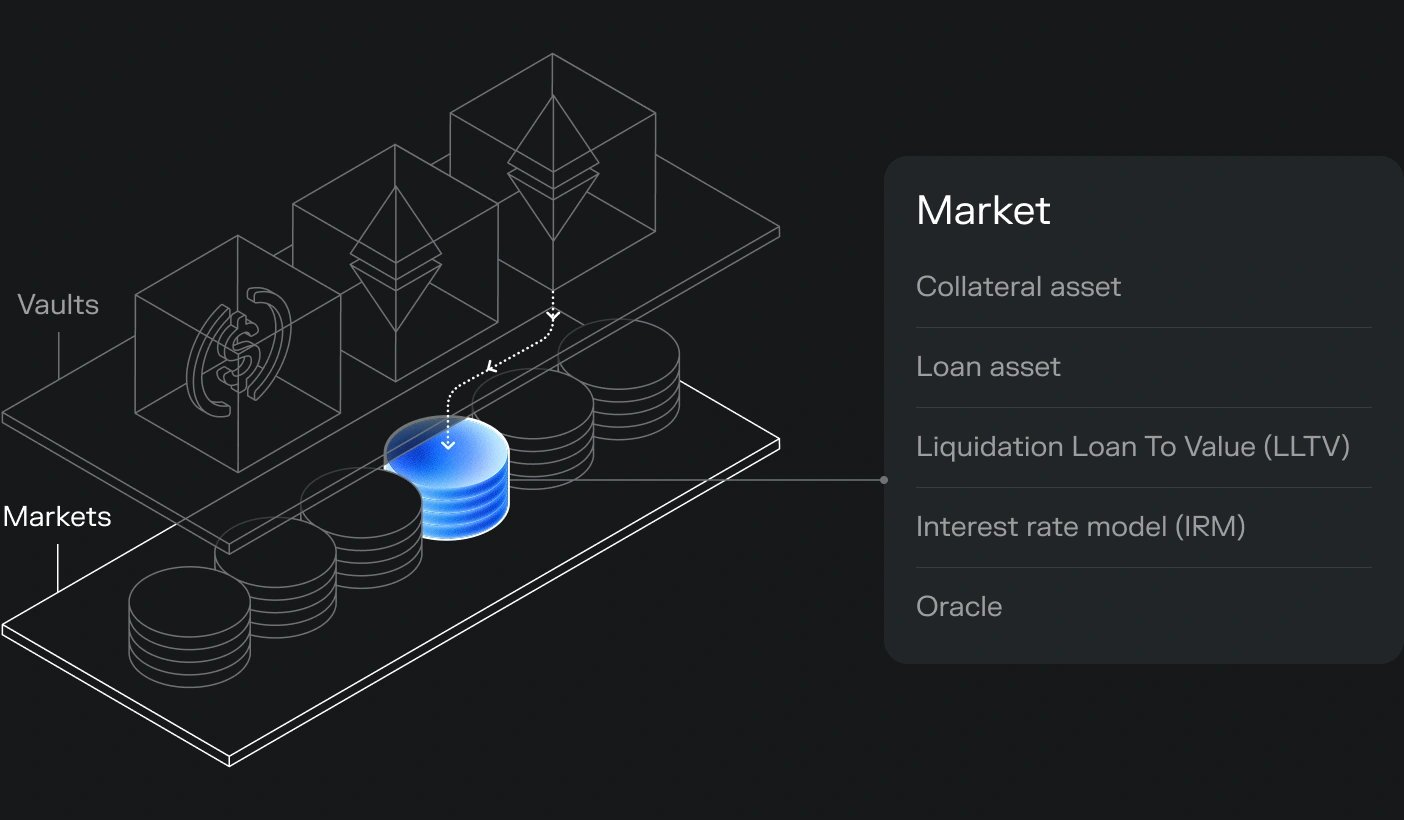
Morpho 市场是一种隔离的借贷池,将单一抵押品资产与单一贷款资产配对。这些市场是不可变的,意味着它们的参数在部署后无法更改,并且它们被设计为彼此独立运行,将风险控制在每个市场内。这种结构确保了贷款人和借款人行为的一致性和可预测性。
每个 Morpho 市场都是无需许可创建的,不需要治理批准,这支持了借贷生态系统的快速和去中心化扩展。管理借贷的规则从一开始就是透明的,并且每个市场只有一种抵押品和一种贷款资产的简单性降低了复杂性,同时改善了风险管理。只要底层区块链保持活跃,这些市场就保持功能性和安全性。 [3]
Morpho Vault
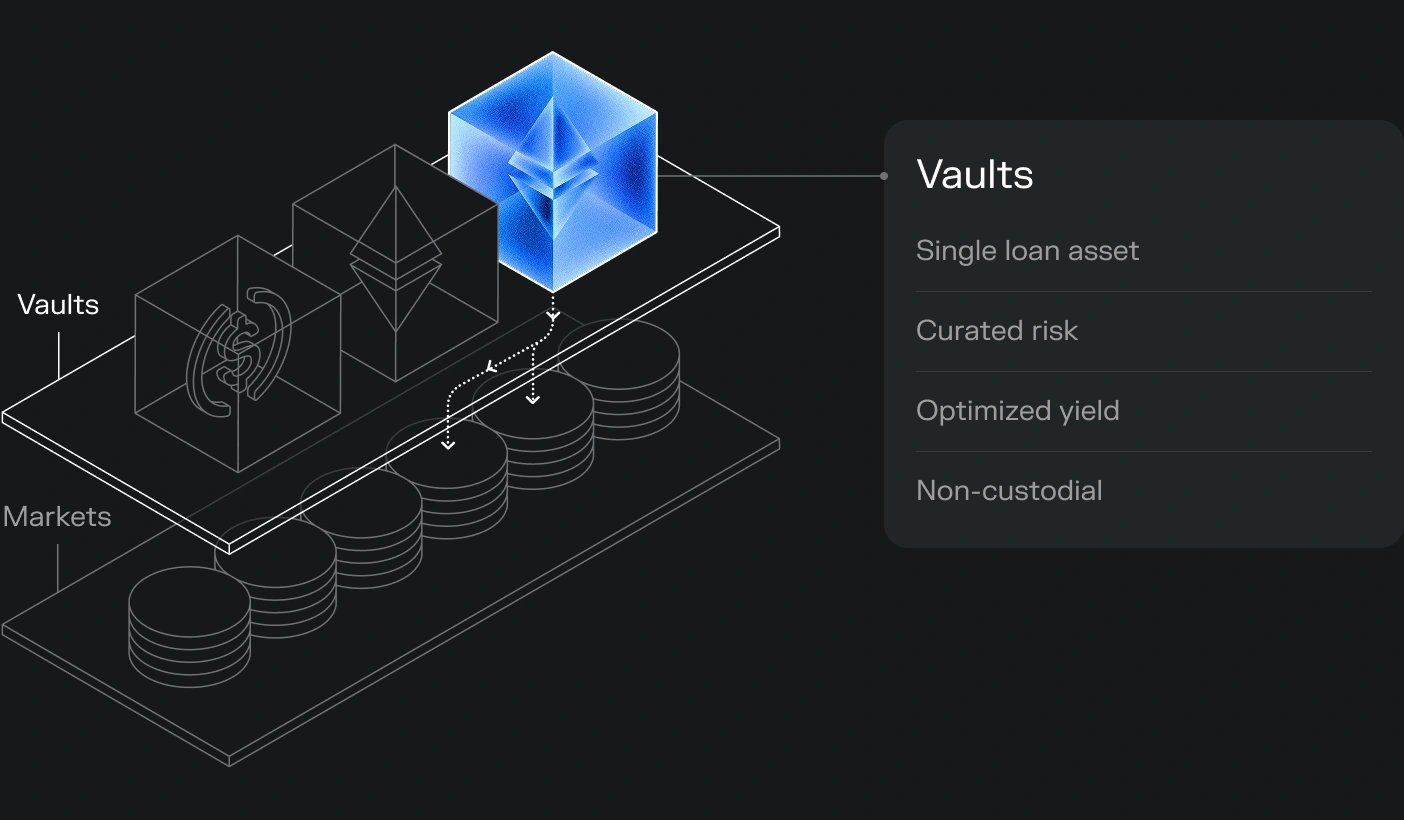
Morpho Vaults 是一个建立在 Morpho Markets 之上的无需许可协议,允许用户将资产存入金库,并从跨多个借贷市场的借款人那里获得收益。每个金库都与特定的贷款资产相关联,并自动将存款分配到各种 Morpho Markets 以优化回报。这种设置消除了用户管理个人市场头寸或自行评估风险的需求,因为金库包括处理这些决策的自动化风险管理机制。
金库遵循 ERC-4626 代币化金库标准,从而实现跨DeFi 生态系统的兼容性和集成。用户保留对其资金的完全控制权,并且可以随时存入或提取资金,具体取决于可用的流动性。所有操作都是透明的,并通过明确定义的角色进行管理,这些角色处理风险管理和资本分配。Morpho Vaults 旨在通过提供一个单一、简化的界面来简化对 DeFi 借贷的访问,该界面通过协议处理风险管理来产生被动收益。 [4]
策展人
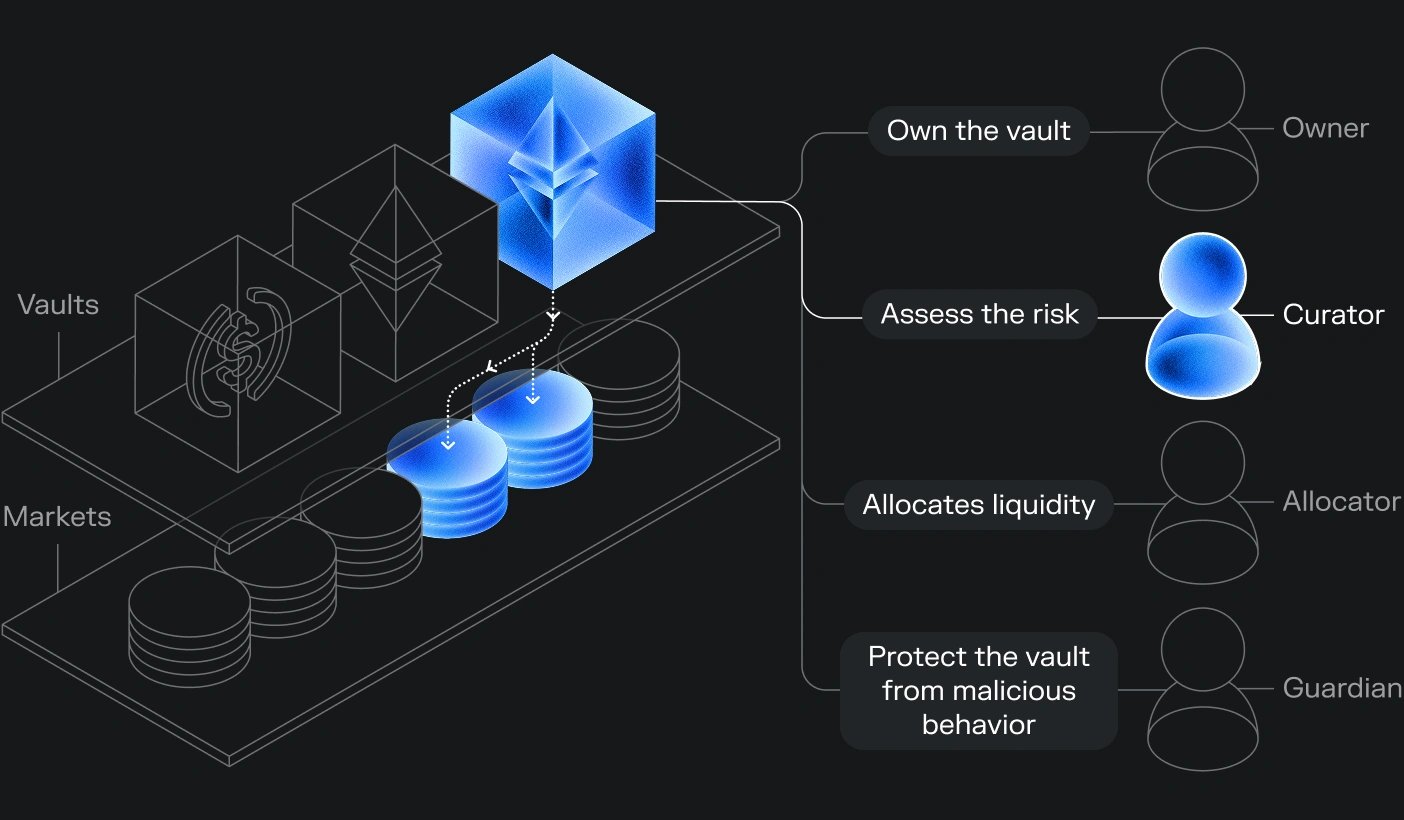
在 Morpho 生态系统中,策展人负责监督借贷金库的战略运营,其主要目标是为存款人实现经风险调整后的最大回报。策展人决定将哪些 Morpho 市场纳入金库,分配资本,并积极管理相关风险。他们的决定会影响他们管理的金库的业绩、收益和安全性。
策展人处理市场选择、利率优化和资本分配,确保收益保持竞争力,同时最大限度地降低风险敞口。他们监控抵押品质量、价格预言机可靠性和流动性状况,以避免潜在损失。策展人还与用户公开沟通金库业绩和风险设置。金库在更广泛的管理框架下运作,该框架包括其他角色——所有者、守护者和分配者——每个角色都具有明确的权限,以支持策展人的策略并确保系统安全透明地运行。 [5]
利率模型
Morpho的利率模型(IRM)系统设计为模块化且受治理控制,允许不同的模型管理贷款市场中利息的计算方式。每个Morpho市场在创建时都会从治理批准的集合中选择一个IRM;此选择之后无法更改。IRM决定了借款人支付的利率,进而决定了贷款人的收益。借款和供应年化百分比收益率(APY)源自IRM的每秒利率计算,分别反映了借款成本和贷款人的收益。该系统设计为透明且可预测,供应APY考虑了利用率和费用(目前设置为零)。 [6]
自适应曲线
目前使用的主要模型是自适应曲线IRM,旨在将市场的利用率(借款/供应比率)保持在90%左右。该模型包含两种机制。首先是曲线机制,它建立了短期响应性:当利用率飙升时,利率急剧上升;当利用率下降时,利率下降。例如,如果目标利率在90%利用率时为4%,那么在100%利用率时,利率将跃升至16%,而在0%利用率时,利率将降至1%。
其次是自适应机制,它会根据利用率趋势随时间调整曲线。如果利用率持续过高或过低,模型会将曲线向上或向下移动,从而激励借贷平衡。这种动态结构使自适应曲线IRM能够在没有外部干预的情况下调整跨市场条件和资产类型。 [6]
公共分配器
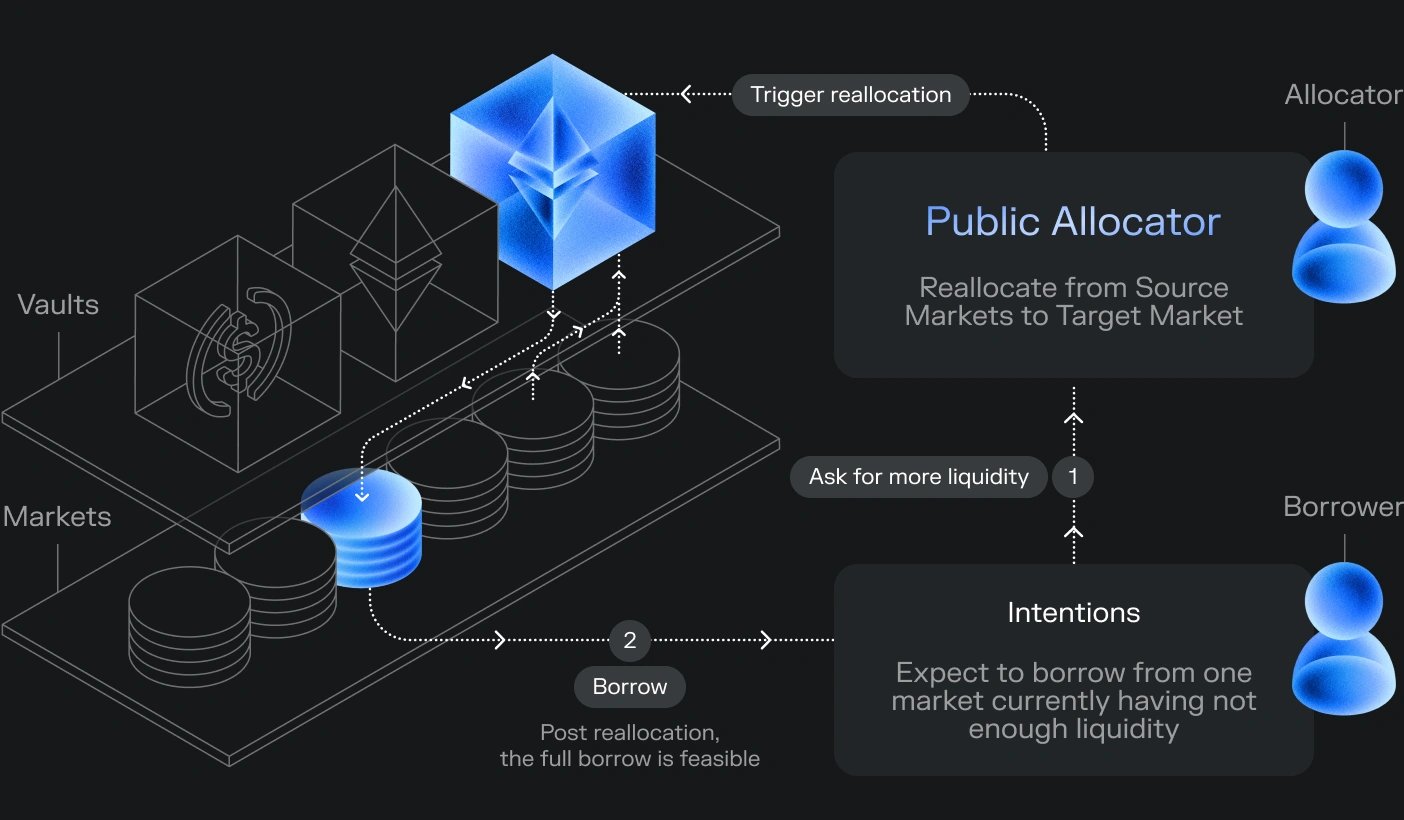
Morpho 公共分配器是一个智能合约,旨在解决跨孤立借贷市场流动性分散的挑战。在 Morpho 中,每个市场都是隔离的以控制风险,但当流动性分散在跨多个池中时,这可能会导致效率低下。公共分配器使借款人能够通过按需将闲置流动性从一个市场重新分配到另一个市场来访问更多资金。分配器不是要求借款人将他们的交易拆分到跨多个市场,而是自动获取所需的流动性,并在单个借款操作中提供它。
这种机制通过提供对借款人不可见的无缝流程来提供深度流动性,从而增强用户体验。它还通过创建流动性网络效应来使更广泛的生态系统受益,从而在不牺牲隔离安全性的情况下提高市场效率。金库管理员可以通过定义流量上限、首选市场路线和可选费用结构来保持对分配器行为的控制。这确保了在流动性变得更具流动性和可访问性的同时,底层风险控制仍然有效。因此,公共分配器将隔离借贷市场的安全性与集中借贷的便利性相结合,从而在不影响去中心化或风险管理的情况下提高效率。 [7]
Bundlers
在 Morpho 生态系统中,Bundler 是将多个操作(例如借贷、借款或交换)组合成单个交易的 智能合约。这种结构通过消除手动执行和单独确认每个步骤的需求来简化用户工作流程,从而减少摩擦和 gas 成本。
目前有两个版本的 bundler:Bundler2 和 Bundler3。Bundler3 是最先进的版本,直接集成到 Morpho 界面中。它使用户能够一键执行复杂操作,从而简化 DeFi 操作。借助 Bundler3,用户可以高效地执行多步骤流程,通过仅支付一笔交易来避免不必要的 gas 支出,并确保原子性。如果交易的任何部分失败,整个操作将回滚。这种捆绑功能改善了用户体验,并最大限度地降低了与协议交互时的成本和风险。 [8]
MORPHO
MORPHO 是 Morpho 协议的治理代币,赋予持有者在 Morpho DAO 内的投票权。治理决策采用加权投票系统,影响力基于持有或委托的 MORPHO 数量。参与者可以对协议的拟议变更或升级进行投票。
最初的 MORPHO 代币(现在被认为是旧版)在部署时不支持链上投票跟踪。为了解决这个问题,社区批准在 MIP-75 中创建一个包装版本。包装后的 MORPHO 启用了链上治理功能,旨在支持未来的跨链互操作性。可以使用 Morpho App 上的包装合约将旧版代币以 1:1 的比例转换为包装后的 MORPHO。但是,只有包装后的 MORPHO 可以转移,从而降低了外部集成中出现混淆或误用的风险。 [9]
代币经济学
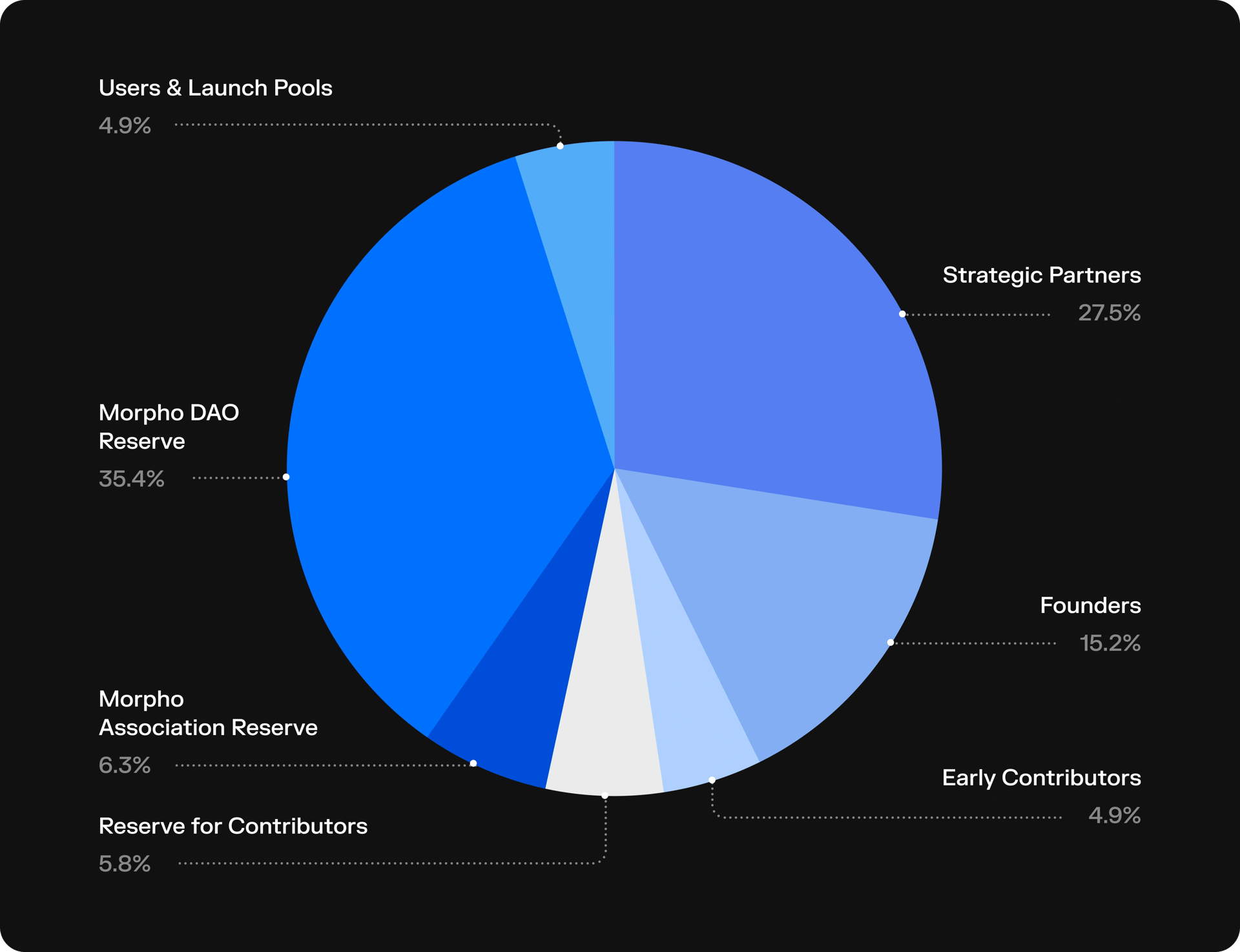
MORPHO 的总供应量为 10 亿个代币,其分配如下: [9]
- Morpho DAO: 35.4%
- 战略合作伙伴: 27.5%
- 创始人: 15.2%
- Morpho 协会: 6.3%
- 贡献者储备: 5.8%
- 用户和启动池: 4.9%
- 早期贡献者: 4.9%
可转移日期时的流通供应量约为 11.2%。 [9]
合作伙伴
- Ribbit Capital
- a16z Crypto
- Coinbase Ventures
- Variant
- Pantera
- Prelude
- Kraken Ventures
- Nascent
- Blocktower
发现错误了吗?
